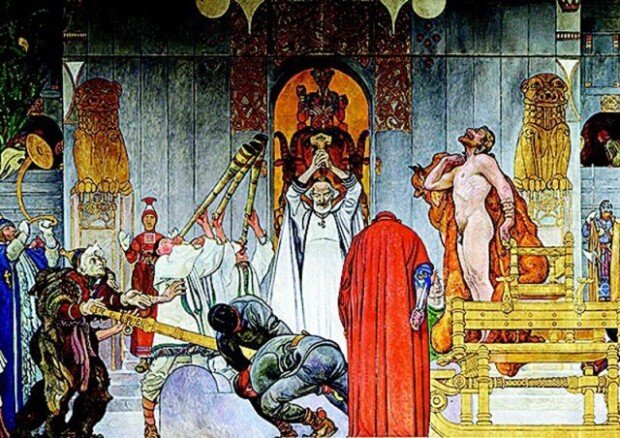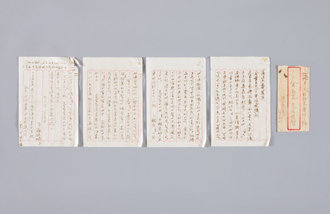A masterpiece returned in 82 years
A masterpiece returned in 82 years
Posted February. 09, 2023 07:50,
Updated February. 09, 2023 07:50

Carl Larsson is a representative artist of Sweden. His key pieces are featured on the wall of the central hall of the national museum of Sweden, rather than inside its exhibition hall. It is because they are a series of murals depicting Sweden’s history and legends. The last painting was installed over 80 years after it was finished, even though the museum commissioned it. Why did it take so long?
“Midwinter Sacrifice” was the most contentious piece in Swedish art history. It features Swedish King Domalde in North European legend making a human sacrifice to avoid midwinter famine. The background is the Temple at Uppsala, the center of the ancient Norwegian faith. The lavish temple decorated with gold worships three gods, each responsible for famine and plague, war, and marriage. The god in control of famine and plague was the most powerful, which was the reason why a human sacrifice was made during a famine. A white sack sits in front of the chief priest in the middle of the ceremony. A person brought in alive as a sacrifice must be in there. As the priest gets ready to stab the sacrifice, the king gets up and takes off his clothes. The king orders the priest to kill him instead, as he can’t watch any more people sacrificed. The painting was highly contentious as the king is featured naked and deals with a superstitious topic, such as human sacrifice.
The painting, which the museum rejected, was owned by somebody else, and the painter passed away. The painting was even sold to a different owner in Japan in 1983. Then, the painting was revealed at the exhibition dedicated to Larsson to celebrate the 200th anniversary of the National Museum in 1992. Over 300,000 people visited the museum to see the painting borrowed from Japan. Many voices were calling for the return of the painting.
After efforts of many years, the painting returned to Sweden and was hung where it was supposed to be in 1997. It had been 82 years after it was first rejected. Now the painting is interpreted in a different way. The king who sacrificed himself to protect people must have been the message the painter wanted to deliver.







